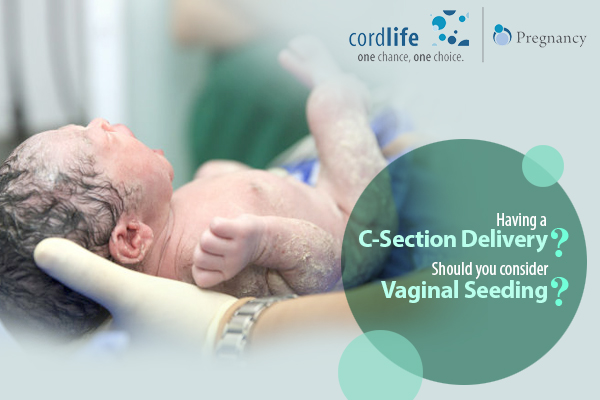Table of Contents
Have you been advised to undergo a C-section delivery? Then, at the very outset, let us tell you that, one of the reasons why vaginal birth is still preferred over C-section is that, babies born vaginally come into contact with good microbiota or bacteria, from the mother’s vaginal fluid, as they travel down the birth canal, thus helping them boost their immune system and fight infection.
However, babies born through C-section who are not exposed to the initial dose of vaginal bacteria from their mothers are more susceptible to allergies, asthma and various other kind of diseases, than their counterparts born out of vaginal deliveries. This is when, experts recommend “vaginal seeding” as an alternative method.
So, What is Vaginal Seeding?
According to the American College of Obstetricians and Gynaecologists’ Committee, “Vaginal seeding refers to the practice of inoculating a cotton gauze or a cotton swab with vaginal fluids to transfer the vaginal flora to the mouth, nose, or skin of a new born infant. The intended purpose of vaginal seeding is to transfer maternal vaginal bacteria to the new born”.
Being more elaborate, an hour before the baby’s birth, the gynaecologists place a piece of cotton gauze or swab soaked in a saline solution into the vagina like a tampon. And as soon as the baby is born, the midwife rubs its entire mouth, face and body with the swab. The whole purpose is to transfer the same number of bacteria from the mother’s vaginal fluid to the baby.
What Are The Possible Benefits?
Although, the effectiveness of vaginal seeding are still in the early stages of research, however some studies have shown that seeding the C-section babies with the mother’s vaginal fluid will not just make their gut and immune system stronger, but it will also help in decreasing its risk of asthma, type1 diabetes, obesity even other conditions like Crohn’s disease and coeliac disease, which are mostly common to caesarean babies.
What Are The Potential Risks?
A 2016 study published in the BMJ journal has cited risks both for the mother and the baby in relation to vaginal seeding. Going by the study, if the mother is already suffering from infections like Group B Strep, Herpes and Syphilis; the baby might also get exposed to a few unwanted bacteria, which might lead to eye problems, neonatal sepsis and serious kinds of blood-related disorder5.
What Are the Ways of Boosting a Baby’s Beneficial Microbiomes Post-birth?
However, once the baby is born, there are many things other than vaginal seeding, that you could do to boost a baby’s microbiome like:
- Breastfeeding: Breast milk contributes to 30% of a baby’s healthy bacteria
- Skin-to-skin contact: Right after a baby’s birth, skin-to-skin contact with the baby contributes to 10% of a baby’s healthy bacteria.
If you are about to have a C-section delivery, and are interested in vaginal seeding, have it discussed with your doctor as a part of your birth plan. Since it is a comparatively new process vain its positives and negatives carefully before you decide either ways.
